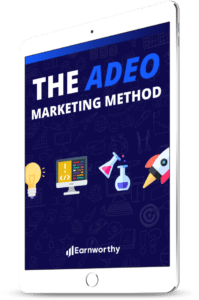At the end of the day, your website is only as good as its ability to convert potential customers into sales and leads. Whether the end goal of your website is to get customers to purchase a new product, sign up for a software demo, or fill out a request to learn more about your service, the conversion strategies you implement on your website can make or break its effectiveness.
Unfortunately, far too many marketers fail to adhere to some of the most basic conversion strategies, resulting in lost conversions and revenue for their company. So what can you do to ensure that your website actually turns those site visitors into sales and leads? Start by avoiding these common conversion pitfalls.
Pitfall #1: Too many steps
Just about every marketer is aware of the purchase funnel—the process in which consumers travel from first becoming aware of a product to when they finally make the purchase. In digital marketing, this process is often referred to as the “conversion funnel”—or the process from when a digital consumer first clicks on a link that advertises a particular product or service to when they make the final purchase.
Unfortunately, many websites require their potential customers to go through a series of informational texts, forms, and other pages before they ever get to the checkout. And statistics reveal that the more pages your customer needs to go through prior to completing the purchasing process, the more likely they are to abandon their purchase altogether.
As Kissmetrics notes, this is especially true of shopping websites that require users to register or create an account prior to checking out—a move that does nothing more than create “an additional stumbling block” in the purchasing process. Ideally, site visitors should be able to “get where they want to go on your site in 3 clicks or less.”
Make sure your website utilizes a simple layout that will only require a few clicks to get customers to the point of purchase. The less steps your customers need to take to complete their purchase, the more likely they are to convert.
Pitfall #2: Unnecessary information requests
For many online businesses, the goal of a website or landing page is to get a potential customer to request information about a service or sign up for a free demo of their software. It’s only natural that you would require some basic information in order to reach out to these customers, but in some cases, marketers can get a bit overzealous in their desire to learn more demographic information about their customers—and this can ultimately lower their conversion rate.
After all, the internet can be a sketchy place, especially in regards to keeping one’s personal information secure. HubSpot reports that even the addition of seemingly minor information requests to a landing page form can significantly lower your conversion rate.
In particular, requiring a customer to fill out their age, phone number, and address (even something as general as state or city) can make potential customers wary of your intentions and abandon the conversion funnel.
The lesson to be learned here: only request information that you truly need to make the sale. While an address is necessary for shipping physical products to a customer, for many companies (particularly those that specialize in digital products or services), a name and email address is more than enough.
Pitfall #3: Unpleasant surprises
We’ve all seen the commercials for prescription medications where the ad spends 55 seconds telling us how great the product is and the final 5 seconds warning us (in a very sped-up monologue) of side effects ranging from heart attack to depression. And once you hear about those side effects, you probably decide that this medication is simply not for you—even if you were entirely convinced of the product’s effectiveness during the first 55 seconds of the ad.
A similar thing often happens during the conversion funnel when companies spring hidden fees, confusing legal contracts, complicated privacy policies, or other stipulations on customers right before checkout. Not only does this leave a bad taste in the customer’s mouth, it also throws in yet another action that is required before checkout (see Pitfall #1).
Rather than surprise customers at the end of the conversion funnel, your best option is to explain any fees or other necessary legal information as clearly and directly as possible well before the customer reaches the final stages of the checkout process.
Never make the mistake of thinking you can just hide fees and other less-than-desirable information until later. While this may help you increase your conversions, you probably won’t experience much revenue gain when angry customers start cancelling their subscriptions.
Putting it into action
By simplifying your website’s conversion funnel, limiting the amount of personal information you request from potential customers, and explaining fees and agreement details upfront, you’ll not only improve your conversion rate, you’ll also manage to retain those customers you’ve worked so hard to convert—which can ultimately play an even bigger role in your company’s long term financial success.
What other common conversion pitfalls would you add to this list? Share your thoughts below or on Twitter!





